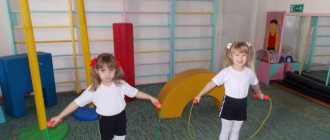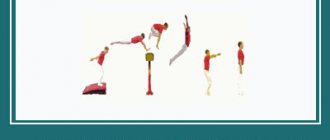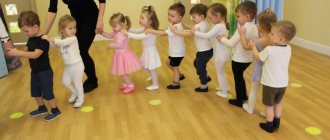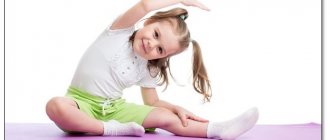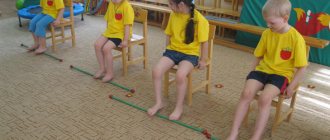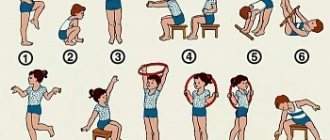The importance of morning exercises
The influence of unfavorable environmental factors on the human body is well known. Speaking about the need to fight them, experts call an adequate motor regimen as one of the measures to improve the general condition. Physical activity is important in increasing the body's resilience, especially today when most people lead a sedentary lifestyle. It can lead to metabolic disorders, weakening of the vascular wall, and decreased activity of the immune system. Both a combination of these factors, and each of them separately, can lead to serious chronic diseases.
A particularly important role belongs to the process of transition of the body from a resting state to an active state. It is important not only to wake up, but also to prepare the body for physical activity throughout the day. An effective means for this is morning hygienic exercises. It consists of a set of special exercises, the implementation of which in a certain order contributes to the gradual activation of blood circulation and metabolic processes in the body. Light physical activity during the transition to active wakefulness, due to the release of certain neurotransmitters, also contributes to the appearance of a positive attitude and creates a charge of vivacity.
Exercise in the classroom
You can also exercise during the educational process. Here are some simple exercises that won't interfere with class work.
- Rotate your head clockwise and vice versa. Up to 5 rotations in one direction and the other.
- The head bends forward, then back, 5 exercises. Then tilt your head left and right in the same amount.
- The fingers touch the shoulders and rotate in a circle, first in one direction and then in the other. Also, such exercises are performed up to 10 times.
- Standing near your desk, put your hands on your belt and bend to the right and left. 10-15 tilts.
- Jumping in place 10-15 times.
This set of exercises can be done anywhere, for example, at home, while doing homework.
Parents can also be involved in these activities; adults also need physical activity.
Such exercises are suitable not only for younger schoolchildren, but also for high school students.
Important nuances
Morning hygienic exercises are one of the most popular areas of application of physical education. It consists of a series of physical exercises that differ in the following features:
- Slight complexity . The movements and their combinations included in the complex for morning exercises are distinguished by their simplicity, since their goal is not to increase muscle mass and endurance, but only to ensure the transition of the body from a sleeping state to an active one. Morning exercise should not cause fatigue.
- When doing morning exercises, the exercises should follow each other in a certain order , starting with the simplest. In order not to keep the exercises and their sequence in memory, you can use pictures that are presented in large numbers on the Internet or periodicals dedicated to a healthy lifestyle.
- An important nuance is the need to perform morning complexes in the fresh air. To do this, you must first ventilate the room. The air must be saturated with oxygen - this is a prerequisite for a complete transition from sleep to wakefulness.
- When performing exercises, clothing should be as light as possible, not restricting movement and not compressing the area where blood vessels and nerves pass.
- An extremely important parameter throughout the entire complex of morning exercises is well-being. It is necessary to monitor breathing and subjective sensations. As a result of morning exercises, there should be no muscle soreness, severe shortness of breath, severe fatigue and excessively frequent and strong heartbeat. Therefore, the duration and intensity of the exercises must be regulated independently, making sure that they do not cause discomfort.
The physical and adaptive capabilities of the body depend on many factors - the state of the cardiovascular system, the tone of skeletal muscles, the degree of activity of the nervous system. Therefore, the duration, intensity and other nuances of performing internal physical exercises are strictly individual. Moreover, there are a number of conditions when performing morning exercises is possible only after consulting a specialist.
Morning exercises
The choice of exercises for morning exercises should be carried out in accordance with the general condition, well-being, as well as the specific health status of each individual person. The most common are:
- Tilts.
- Squats.
- Turn the torso to the sides. It is recommended to start with a minimum amplitude and gradually increase it.
- Lunges.
- Steps to the side. In addition to muscle work and improved blood circulation, this exercise has a beneficial effect on coordination.
- Stretching. The purpose of such exercises is to increase muscle elasticity. It should be performed only after warming up, when the muscles are already warmed up.
- Easy running.
- Easy jumps.
- Breathing exercises. She must complete a set of exercises. Here you can combine chest and abdominal breathing, holding your breath.
It is recommended to start classes with smooth movements in smaller joints - wrist and ankle, gradually increasing the load. After this comes the turn of large muscle groups - the muscles of the trunk.
We should not forget about an individual approach, in particular, people with diseases of the cervical spine should not strain the corresponding muscle groups and make active movements in this department. This restriction also applies to people who have problems with the lumbar region. If it is known that a person has joint diseases, movements in them should be as smooth and careful as possible.
Running and jumping should only be done if they are tolerated. For example, intense jumping is not recommended for people who are over normal body weight due to the excessively high load on the leg joints. To some extent, this limitation also applies to patients with severe osteoporosis, since in this case there is a risk of negative effects on the vertebral bodies and articular heads of bones.
In turn, people with diseases of the respiratory system should not get involved in intense running, since such exercise will only bring fatigue and not vigor for the whole day. After doing your morning exercises, you can take a shower or dry yourself with a damp towel.
Approximate gymnastics complexes before classes.
Approximate gymnastics complexes before classes
1. For students in grades I-II
Complex 1.
On command, take the position of correct posture and maintain it for 5-6 seconds.
Ex. 1.
Walking in place, maintaining correct posture (32-48 counts).
Ex. 2.
Starting position (i.p.) - main stance (o.s.). 1—arms to the sides, 2—arms up, 3—arms forward, 4—and. p. (6-8 reps).
Ex. 3.
I. p. - stand with legs apart. 1 - turn the body to the right, arms to the sides, 2 - i. p., 3-4 - the same to the left (6-8 reps).
Ex. 4.
"Parsley". I. p. - crouching emphasis. 1 - stand up, arms to the sides, palms forward, fingers spread, 2 - i. p. (6-8 reps). On the fourth repetition, arms up and out, on the 5th-6th, arms forward.
Ex. 5.
Walking in place, maintaining correct posture (32-48 counts). While walking, observe rhythmic breathing (I-2 - inhale, 3-4 - exhale).
Ex. 6.
I. p.—o. With. 1 - arms through the sides up, 2 - arms to the sides, 3 - arms forward, 4 - and. p. (4-6 reps).
Complex 2.
On command, take the position of correct posture and maintain it for 5-6 seconds.
Ex. 1.
Walking in place, maintaining correct posture (32-48 counts).
Ex. 2.
I. p. - hands in front of the chest. 1-2 - jerks with bent arms back, 3-4 - jerks with straight arms back with the body turned to the right, 5-8 - the same with a turn to the left (4-6 reps).
Ex. 3.
I. p. - hands on the belt. 1 - tilt to the right, 2 - i. p., 3-4 - the same to the left (6-8 reps).
Ex. 4.
I. p. - stand with legs apart, hands on the belt. 1 - lean forward, touch the floor with your hands, 2 - and. p. (6-8 reps).
Ex. 5.
Walking in place, maintaining correct posture (32-48 counts). While walking in place, maintain rhythmic breathing.
Ex. 6.
I. p.—o. With. 1 - right hand forward, 2 - the same with the left, 3 - right hand up, 4 - the same with the left, 5 - right hand to the side, 6 - the same with the left, 7 - right hand down, 8 - the same with the left (4 -6 reps).
Complex 3.
On command, take the position of correct posture and maintain it for 5-6 seconds.
Ex. 1.
Walking in place, maintaining correct posture (32-48 counts).
Ex. 2,
"Weightlifters." I. p.—o. With. 1 - force your right hand to the shoulder, clench your fingers into a fist, 2 - the same with the left, 3 - force the right hand upward, 4 - the same with the left, 5 - the right hand to the shoulder, 6 - the same with the left, 7 - the right hand down, 8 - the same with the left (4-6 reps).
Ex. 3.
I. p. - stand with legs apart, hands on the belt. 1—tilt to the left, 2—and. p., 3 - forward bend, 4 - i. p., 5 - tilt to the right, 6 - i. p., 7 - tilt back, 8 - i. And. (4-6 reps).
Ex. 4.
I. p.—o. With. 1—lunge forward with the right hand, arms to the sides, 2—and. p., 3-4 - the same with the left (6-8 reps).
Ex. 5.
Walking in place, maintaining correct posture (32-48 counts). While walking in place, maintain rhythmic breathing.
Ex. 6.
Game “Forbidden Movement” (2-3 reps).
Complex 4.
On command, take the position of correct posture and maintain it for 5-6 seconds.
Ex. 1.
Walking in place, maintaining correct posture (32-48 counts).
Ex. 2.
"Mowers." I. p. - stand with legs apart, hands as if holding a scythe. Rotation of the body, imitating the movement of a mower.
1 - swing of the scythe, 2 - “mowing the grass” (6-8 reps).
Ex. 3.
I.p.-o. With. 1 - lunge forward with the right hand, hands on the belt,
2 - i. p., 3-4 - the same with the left (6-8 reps).
Ex. 4.
I. p.—o. With. 1—arms to the sides, 2—3—two springy bends forward, hands touching the floor, 4—and. p. (6-8 reps).
Ex. 5.
Walking in place, maintaining correct posture (32 - 48 counts). While walking, maintain rhythmic breathing.
Ex. 6.
I. p.—o. With. 1—left step forward, arms up, 2—right step forward, hands on the waist, 3—left step back, arms to the sides, 4—right step back, arms down (4-6 reps).
Complex 5.
On command, take the position of correct posture and maintain it for 5-6 seconds.
Ex. 1.
Walking in place, maintaining correct posture (32-48 counts).
Ex. 2.
"Vanka-Vstanka." I. p. - stand with legs apart, hands on the belt. 1 - tilt to the right, 2 - tilt to the left (6-8 reps).
Ex. 3.
"Weightlifters." I. p. - stand with legs apart. 1—bend your arms forward, elbows down, clench your fingers into fists, 2—arms up,
3 - hands to shoulders, elbows down, 4 - i. p. (6-8 reps).
Ex. 4.
"Spring". I. p.—o. With. 1-3 - squats, 4 - jump up, arms up (4-6 reps).
Ex. 5.
Walking in place, maintaining correct posture (32-48 counts). While walking in place, maintain rhythmic breathing.
Ex. 6.
Game “Forbidden Movement” (2-3 reps).
Complex 6.
On command, take the position of correct posture and maintain it for 5-6 seconds.
Ex. 1.
Walking in place while maintaining correct posture (32-48 counts).
Ex. 2.
I. p.—o. With. 1 - right back on the toe, arms up, 2 - i. p., 3-4 - the same with the left (6-8 reps).
Ex. 3.
"Woodcutter". I. p. - stand with legs apart, hands in a “lock”. 1—lean forward (“chopping wood”), 2—and. p. (6-8 reps).
Ex. 4.
I. p.—o. With. 1 - squat, arms forward, 2 - i. p., 3 - squat, arms to the sides, 4 - i. p., 5 - squat, arms up, b—i. p., 7 - squat, arms forward, 8 - i. And. (4-6 reps).
Ex. 5.
Walking in place, maintaining correct posture (32-48 counts). While walking, maintain rhythmic breathing.
Ex. 6.
Game “Forbidden Movement” (2-3 reps).
Complex 7.
On command, take the position of correct posture and maintain it for 5-6 seconds.
Ex. 1.
Walking in place, maintaining correct posture (32-48 counts).
Ex. 2.
I. p.—o. With. 1-2 - step right to the right, rise on your toes, bend over, 3-4 - and. p., 5-8 - the same in the other direction (4-6 reps).
Ex. 3.
I. p. - hands on the belt. 1 - tilt to the right, left hand up, 2 - i. p., 3-4 - the same to the left with a change in the position of the hands (6-8 reps).
Ex. 4.
I. p. - crouching emphasis. 1 - stand up, rise on your toes, arms out to your sides, 2 - and. p. (8-10 reps).
Ex. 5.
Walking in place, maintaining correct posture (32-48 counts). While walking in place, maintain rhythmic breathing.
Ex. 6.
Game “Forbidden Movement” (2-3 reps).
2. For students III
—
IV classes
Complex 1.
On command, take the position of correct posture and maintain it for 5-6 seconds.
Ex. 1.
Walk in place, maintaining correct posture and raising your bent leg high (32-48 counts).
Ex. 2.
I. p.—o. With. 1—hands to shoulders, elbows to the sides, shoulder blades together, 2—and. p. (8-10 reps).
Ex. 3.
I. p. - stand with legs apart. 1 - tilt to the right, bend your left arm and touch the armpit, 2 - i. p., 3-4 - the same to the left (6-8 reps).
Ex. 4.
I. p. - crouching emphasis. 1 - stand, arms to the sides, palms up, right forward on the heel, 2 - i. p., 3-4 - the same with the left (6-8 reps).
Ex. 5.
Walking in place, raising your bent leg high and maintaining correct posture (32-48 counts). While walking, maintain rhythmic breathing.
Ex. 6.
Game “Forbidden Movement” (2-3 reps).
Complex 2.
On command, take the position of correct posture and maintain it for 5-6 seconds.
Ex. 1.
Walking in place, raising your bent leg high and maintaining correct posture (32-48 counts).
Ex. 2.
I. p. - hands on the belt. I—2—lunge to the right, arms up through the sides, clap above the head, 3—4—and. p., 5-8 - the same to the left (4-6 reps).
Ex. 3.
I. p. - stand with your feet apart and your hands on your belt. 1 - bend forward, arms to the sides, 2 - i. p., 3 - right hand up, tilt to the left, 4 - i. p., 5 - left hand up, tilt to the right, 6 - i. P.,
7 - bend forward, arms to the sides, 8 - i. p. (4-6 reps).
Ex. 4.
I. p. - hands behind the head. 1 - raise the right one, bent at the knee and press it with your hands to your chest, 2 - and. p., 3-4 - the same with the left (6-8 reps).
Ex. 5.
Walking in place, maintaining correct posture (for 32-48 counts): 8 steps - on the entire foot, 8 steps - on the toes, etc. While walking in place, maintain rhythmic breathing.
Ex. 6.
I. p. - hands behind the head. 1 - right hand to the side, 2 - left hand to the side, 3 - right hand forward, 4 - left hand forward, 5 - right hand up, 6 - left hand up, 7 - right hand behind the head, 8 - and. p. (2-4 reps).
Complex 3.
On command, take the position of correct posture and maintain it for 5-6 seconds.
Ex. 1.
Walking in place, raising your bent leg high and maintaining correct posture (32-48 counts).
Ex. 2.
I. p. - arms to the sides. 1—hands behind your head, 2—hands up, 3—hands behind your head, 4—and. p. (6-8 reps).
Ex. 3.
I. p. - stand with legs apart, hands on the belt. Circular movements of the body: 1-4 - to the right side, 5-8 - to the left (6-8 repetitions).
Ex. 4.
I. p. - crouching emphasis. 1 - stand up, arms up, right back on your toes, bend over, 2 - and. p., 3-4 - the same with the left (4-6 reps).
Ex. 5.
Walking in place, maintaining correct posture (32-48 counts): 8 steps - normal walking, 8 steps - on toes, etc. While walking in place, maintain rhythmic breathing.
Ex. 6.
Game “Forbidden Movement” (2-3 reps).
Complex 4.
On command, take the position of correct posture and maintain it for 5-6 seconds.
Ex. 1.
Walking in place, raising your bent leg high and maintaining correct posture (32-48 counts).
Ex. 2.
I. p.—o. With. 1-2—hands up through your sides, rise onto your toes, 3—4—and. p. (6-8 reps).
Ex. 3.
I. p. - stand with your legs apart, hands behind your head. 1—turn the body to the right, 2—and. p., 3-4 - the same to the left (6-8 turns).
Ex. 4.
I. p.—o. With. 1 - right lunge, hands on the belt, 2-3 - springy swaying, 4 - i. p., 5-8 - the same with the left (4-6 reps).
Ex. 5.
Walking in place, maintaining correct posture (32-48 counts). While walking in place, maintain rhythmic breathing.
Ex. 6.
Game “Forbidden Movement” (2-3 reps).
Complex 5.
On command, take the position of correct posture and maintain it for 5-6 seconds.
Ex. 1.
Walking in place, raising your bent leg high and maintaining correct posture (32-48 counts).
Ex. 2.
I. p. - hands on the belt. 1 - turn the body to the right, 2 - the same to the left (8-10 repetitions).
Ex. 3.
I. p.—o. With. 1—step right to the side, 2–3—lean forward, touch the floor with your hands, 4—and. p., 5-8 - the same step with the left (6-8 reps).
Ex. 4.
I. p. - hands on the belt. 1 - squat, arms to the sides, 2 - and. p. (10-12 reps). When repeating, change the position of your hands: forward, up, to the sides.
Ex. 5.
Walking in place, maintaining correct posture (for 32 - 48 counts): 8 steps - normal walking, 8 steps - on toes, etc. While walking in place, maintain rhythmic breathing.
Ex. 6.
I. p.—o. With. 1—right hand to the shoulder, 2—left hand to the shoulder, 3—right hand up, 4—left hand up, 5—8—claps overhead, 9—left hand to the shoulder, 10—right hand to the shoulder, 11— left hand down, 12 - right hand down (2—
3 reps).
Complex 6.
On command, take the position of correct posture and maintain it for 5-6 seconds.
Ex. 1.
Walking in place, raising your bent leg high and maintaining correct posture (32-48 counts).
Ex. 2.
I. p. - stand with legs apart, hands on the belt. 1 - tilt to the right, arms up, 2 - i. p., 3-4 - the same to the left (6-8 reps).
Ex. 3.
I. p. - hands on the belt. 1—right lunge to the side, arms forward, 2—and. p., 3-4 - the same with the left (4-6 reps).
Ex. 4.
I. p.—o. With. 1—crouching, 2—leaning forward without taking your hands off the floor, 3—crouching, 4—i. p. (6-8 reps).
Ex. 5.
Walking in place, maintaining correct posture (32-48 counts): 8 steps - normal walking, 8 steps - on toes, etc. While walking in place, maintain rhythmic breathing.
Ex. 6.
I. p. - hands to shoulders. 1—arms to the sides, 2—arms up, 3—arms forward, 4—and. p. (6-8 reps).
Complex 7.
On command, take the position of correct posture and maintain it for 5-7 seconds.
Ex. 1.
Walking in place, raising your bent leg high and maintaining correct posture (32-48 counts).
Ex. 2.
I. p.—o. With. 1 - right back on the toe, arms up, 2 - i. p., 3-4 - the same with the left (6-8 reps).
Ex. 3.
I. p. - stand with legs apart, hands on the belt. 1 - turn the body to the right, arms to the sides with palms up, 2 - i. p., 3-4 - the same with a turn to the left (6-8 reps).
Ex. 4.
I. p. - wide stance with legs apart, hands to shoulders. 1 - half squat on the right, left straight, arms to the sides, 2 - i. p., 3-4 - the same on the left (6-8 reps).
Ex. 5.
Walking in place, maintaining correct posture (32-48 counts). While walking, maintain rhythmic breathing.
Ex. 6.
Game “Forbidden Movement” (2-3 reps).
Positive effect on the body
This is an important part of the essay on the topic “morning exercises”; it should create motivation for participation in classes. Correct, systematically performed morning exercises train discipline, developing the right useful skill that has a beneficial effect on the entire body.
And besides, it mobilizes attention, which is extremely important especially for people engaged in mental activity. Regular exercise, as it were, accustoms the body to wake up, especially if this happens every day at the same time. So, gradually the body itself develops an optimal awakening mode.
Due to the correct gradual activation of blood circulation and muscle activity, a gradual improvement in well-being occurs. After a certain period of systematic exercise, people note a decrease and then a complete disappearance of the feeling of lack of sleep and weakness in the morning; and after completing a set of exercises - a surge of vigor and endurance throughout the day. In addition, appetite increases, sleep improves, and immunity becomes more resistant to external influences.
Even mild physical activity increases the tone of the nervous system and activates the work of the main organs and systems of the body - cardiovascular, respiratory, endocrine. The consequence is not only the disappearance of lethargy and drowsiness, but also an increase in performance, both physical and mental. Cells of organs and systems are saturated with oxygen, which leads to increased metabolism.
The external side of the issue also deserves attention: performing a few simple exercises after waking up helps eliminate swelling, which is a consequence of stagnation - a faithful companion to a stationary body position.
Brief summary of the project[edit]
Morning exercise improves the tone of the whole body, makes the heart start working, awakens the nervous system, and improves metabolism.
Since project activity is one of the components of research activity, the result of the work will be the project: “Morning exercises”. The topic of the project was not chosen by chance. After all, it’s no secret that health is the most important factor in life. It is necessary to learn to take care of your health and monitor it from a very early age. It is necessary to remember that design is not creativity to the fullest, but creativity according to a plan, within certain controlled limits.

